It would be nice to anticipate when the market reaches its high point, sell everything, wait patiently for the next crash, with people panicking, and then buy everything back at the low point when the market starts to rise again with frightening force.
This is what every investor dreams about, but the reality is quite different.
Throughout history, we have had several Bear Markets, as you can see from the image below.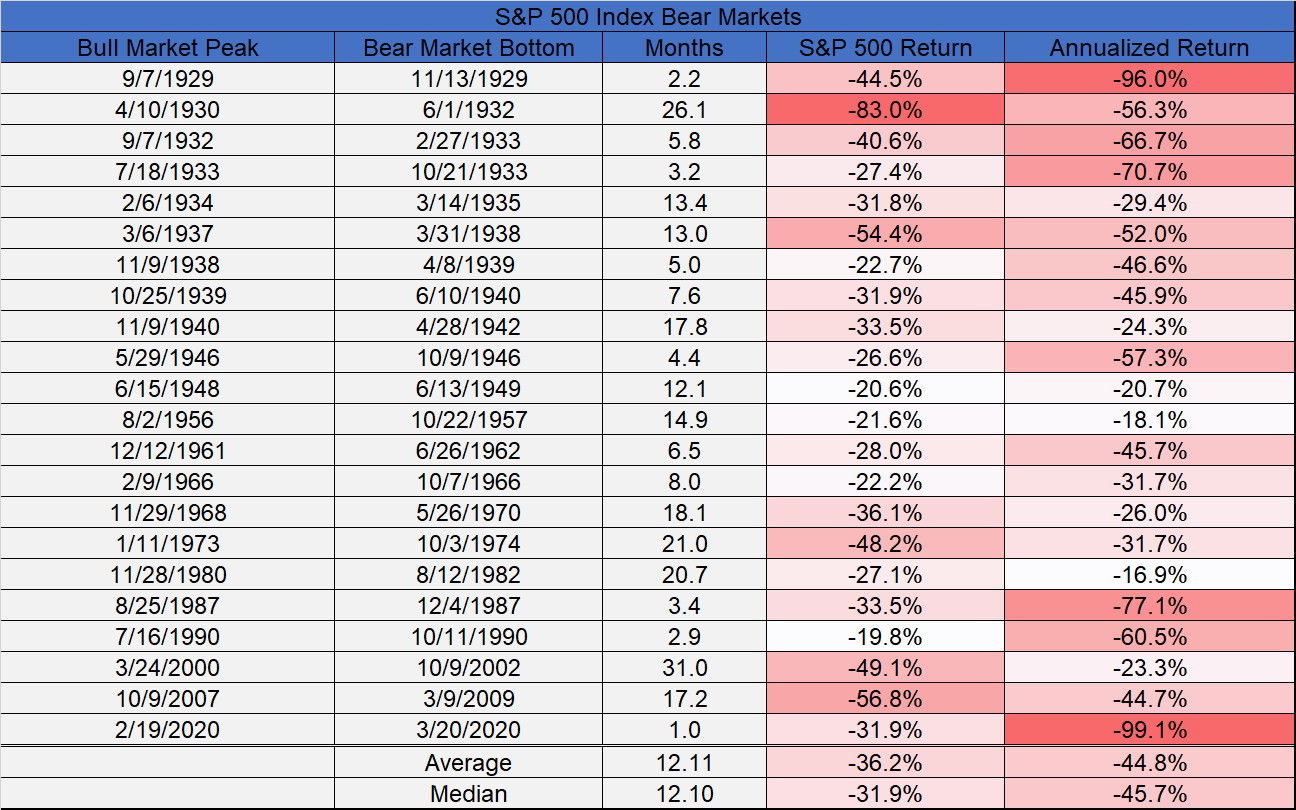
Usually, we speak of a bear market when markets correct by more than 20%.
NASDAQ Composite could be considered to be in bearish territory, other indices not yet.
Bear Market, what we need to know
As I said at the beginning, neither I, nor anyone else in this world, will be able to know if and how this correction will turn into something worse, but as a great investor said, you cannot predict, but you can prepare.
So, here are some important things to remember about a bear market:
- Very high volatility
- The 'masses' go more crazy than on other occasions
- After the collapse, the rebounds are strong
- There can be strong rebounds even during the collapse, then down again
- This has already happened
- Expected returns rise
- Affects 99% of investments
To elaborate on the above, see for example last week, characterised by high volatility, where respectively we had a very strong rebound (+3%) and a subsequent daily slump (-3.6%) even worse.
As you can see, the magnitude of these movements is extremely unlikely.
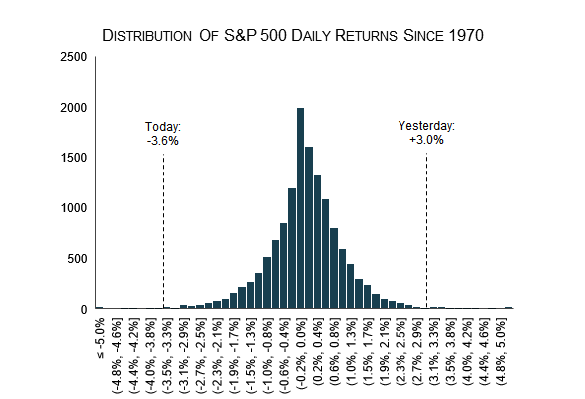
Similarly, psychologically preparing ourselves for the eventuality of a bear market, should one occur, we see the stock market movements during the crisis of 1929-1932:
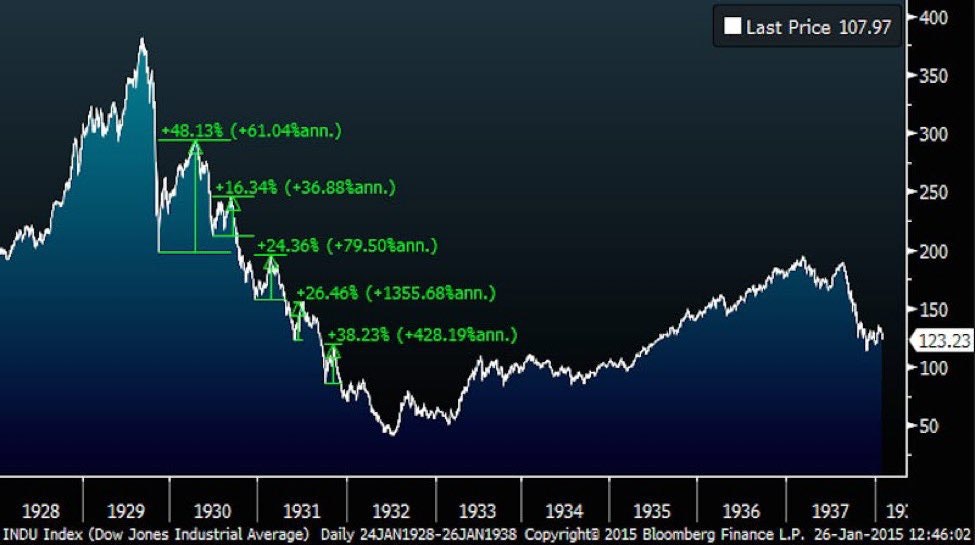
Bounces of up to 40%, but in a market that continues to fall. These are also known as "bear traps," as investors, convinced that the worst is over, enter hands down only to see their portfolios fall again.
Regarding psychology and mass behaviour, we have addressed this many times, markets are a mix of greed, hope, fear, and impatience, all characteristics that in very volatile phases are accentuated and can lead us to make mistakes.
Additionally, as almost all asset classes (except cash and a few others) fall in the worst of times, we really feel we have no way out except to sell everything, and that is the worst mistake.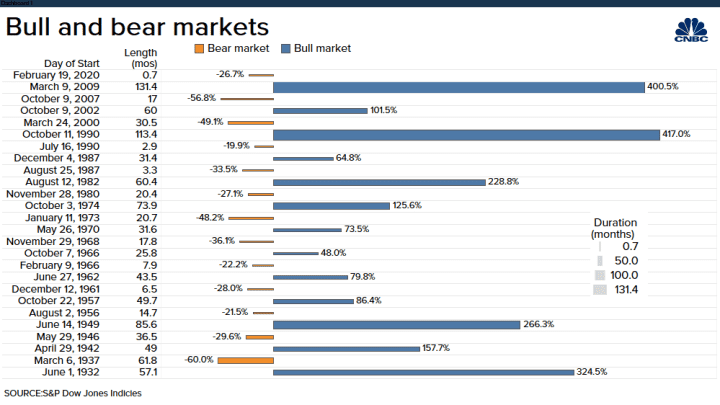
What happens after a bear market, however, is just as important: the markets rebound, and they do so violently and quickly. That's why it's important to BE INVESTED when that happens, and that's why unfortunately many investors don't perform in the markets because they are out (having sold) of everything at that time.
Looking at the positives of bear markets, as mentioned above, we certainly have a number of aspects to consider:
Despite numerous bear markets, the market always goes up in the end. 100 Dollars invested in 1928 on the S&P 500, would become 761,710 Dollars in 2021, and look what we've gone through, of all things.
When prices fall, instead of focusing (although I know it's not easy) on the falling prices, we should focus on the fact that expected future returns (and risk premiums) increase considerably, so what is actually happening is that you are creating a very favourable environment for investing your money.
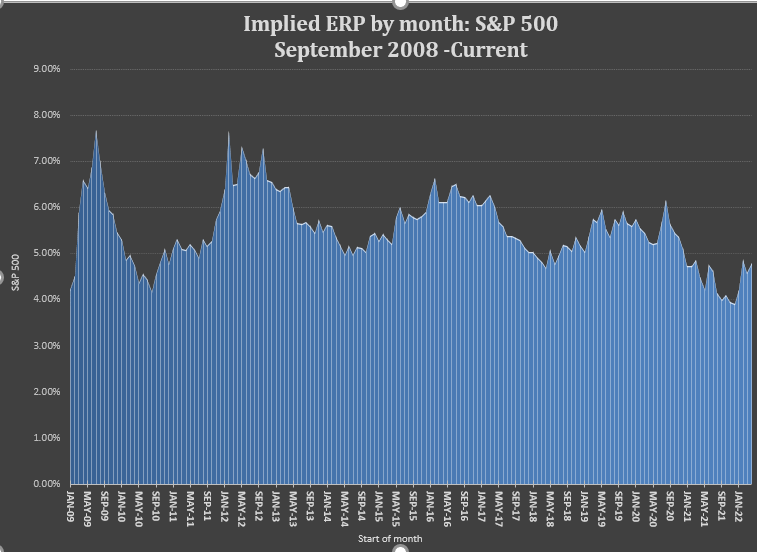
In the chart above, look at the "premiums for investing in risk assets" (i.e., equities). In particular, notice the market lows (early 2009, the end of the subprime bear market) and look at what happened during the first months of this year's decline.
Risk premiums go up, so translated simply, it means that the probability of getting better returns for our investments increases.
You cannot predict it, but you can prepare. Knowing this, what we can do is prepare both emotionally and strategically.
Knowing as an example that the maximum duration of a bear market has been of 31 months (dotcom) and that the worst decrease could be for an example 60-65% (subprime), it could be thought to invest the quota of cash (I as an example still have 25% of liquid portfolio) to stagger previewing is entered on base time (every 3 months in bear markets) and percentage (I enter with "x" to every decrease of 15%).
There is no single best strategy, but the important thing is to be aware of all of the above, to be prepared, and to be found invested when the markets resume.
Until next time!
If you find my analyses useful and would like to receive updates when I publish them in real-time, click on the FOLLOW button on my profile!
"This article has been written for informational purposes only; it does not constitute a solicitation, offer, advice, or recommendation to invest as such and is not intended to encourage the purchase of assets in any way. I would like to remind you that any type of asset is evaluated from many points of view and is highly risky, and therefore, any investment decision and the related risk remain your responsibility."
